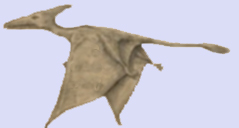The Fiery Flying Serpent of the Old Testament is also found in the Book of Mormon. In fact, in First Nephi, Chapter 17, verse 41, it is more clearly a flying fiery “serpent” that afflicted the children of Israel at the time of Moses, more clear than at least one of the relevant passages in the Bible, in that “flying” is included.
I Nephi 17:41
And he did straiten them in the wilderness with his rod; for they hardened their hearts, even as ye have; and the Lord straitened them because of their iniquity. He sent fiery flying serpents among them; and after they were bitten he prepared a way that they might be healed; and the labor which they had to perform was to look; and because of the simpleness of the way, or the easiness of it, there were many who perished.
Traditional Interpretation
One traditional way this is interpreted is as follows:
- Not literally fiery, but biting with venom that causes burning
- Not literally flying but leaping out of trees
- Literally a serpent, meaning a snake
Rhamphorhynchoid Pterosaur Interpretation
My associates and I offer an interpretation quite different:
- Apparently fiery because of a bioluminescent glow at night
- Literally flying, with wings that flap
- Not literally a snake, but something with a long tail suggesting a snake
I suggest you consider the new pterosaur interpretation, for major problems fly up from the traditional explanation. For example, what would be the worst symbol for Moses to use, or any other prophet or religious leader to use, as a symbol for Jesus Christ? Would it not be a symbol that was well known as representing Satan? The snake seems like the worst thing that Moses could have used to turn our minds to the Savior.
How would a Rhamphorhynchoid pterosaur image more closely resemble Jesus Christ on the cross? The outstretched wings on the pole used by Moses would have represented the outstretched arms of the Savior. My associates and I, who study in an obscure branch of cryptozoology, offer this interpretation as far more reasonable for what was used by Moses as a symbol for the people of Israel to look up to.
By the way, a long-tailed pterosaur at rest, with wings folded up, could resemble a snake because the long tail would be visible. Flying at night, venomous creatures could easily have caused great problems for people. They would have had had more access to people, for they would also have been able to move at night, after flying into an area from another location. Also, how unreasonable for anybody to name an animal with the word “flying” if it were an non-flying snake! Jumping out of a tree does not resemble flying, especially not according to the original meaning of the Hebrew word, which signifies a back-and-forth motion, like wings flapping.
.
Fiery Flying Serpent? (sketch of the “Gitmo pterosaur” of Cuba)
.
This pterosaur-interpretation is not from any policy or doctrine of The Church of Jesus Christ of Latter-day Saints, but an opinion of one of its members: Jonathan David Whitcomb. This opinion is shared by several other active investigators of modern flying creatures that have been given names like the following in Papua New Guinea:
- Ropen
- Indava
- Seklo-bali
- Duwas
- Kundua
- Kor
- Wawanar
###
Book “Searching for Ropens and Finding God”
Many of the paleontologists will say, “A live pterosaur?! A live pterosaur?! We have got pterosaur fossils and there cannot be any more live pterosaurs.”
O fools, they shall have pterosaur fossils; and they shall come from among those animals that died during the ancient Flood written of in Genesis. And what thanks do paleontologists give to God for the preservation of basic animals types on the Ark of Noah, written of in the Bible?



